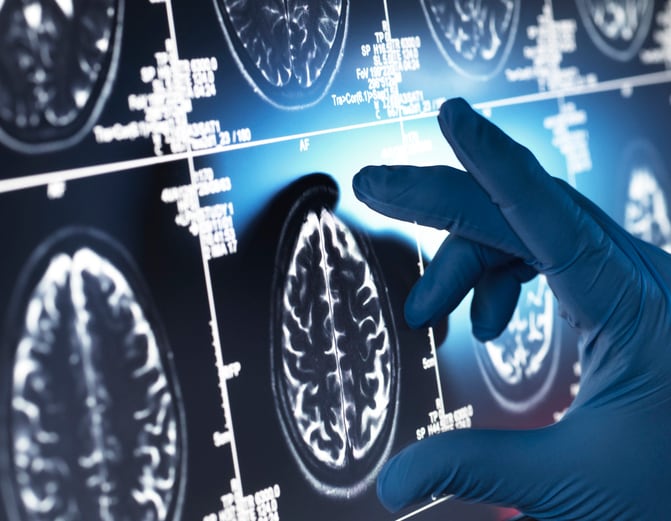Tocotrienols have not been as widely studied as tocopherols, and the reviews highlight the need for further research to confirm the clinical utility of this form of vitamin E. However, the evidence to date suggest that tocotrienols may play a natural neuroprotective role in aging due to their antioxidant, anti-inflammatory and immune-enhancing properties.
“Backed by growing scientific evidence, tocotrienols are emerging as promising neuroprotective agents that support and protect brain cells, cognitive functions and memory as well as healthier aging,” said Dr Ariati Aris, scientific affairs specialist at PhytoGaia, in a press release.
The nutraceutical company PhytoGaia supplies TocoGaia, a full-spectrum tocotrienols/tocopherol complex that a recent clinical trial suggested “enhances psychological well-being, modulates oxidative stress, and supports genomic stability in aging populations,” said Dr. Aris, noting that the company is planning a further randomized clinical trial to assess the product’s potential for cognitive health.
Tocotrienol-rich fraction
A 2025 scoping review by researchers at Universiti Kebangsaan Malaysia Medical Centre and other institutions in Malaysia and Indonesia evaluated 24 studies regarding tocotrienol-rich fraction’s effects on the brain.
Tocotrienol-rich fraction (TRF) is a compound from palm oil that typically contains 25% tocopherol and 75% tocotrienol, the bioactive subtypes of vitamin E. It has previously been noted for its beneficial effects on inflammation, hypercholesterolemia and muscle aging.
The findings of the scoping review suggested multiple pathways modulated by TRF, “including, but not limited to, metabolic and mitochondrial bioenergetic processes, antioxidant defense mechanisms, inflammatory and immune response pathways and regulatory networks associated with neurodegeneration,” the researchers wrote in the International Journal of Molecular Sciences.
“The convergence of these neuroprotective effects suggests that TRF holds potential as a supplement to support healthy aging or, at the very least, slow neurodegeneration by mitigating pathological changes that often begin insidiously before the onset of symptoms associated with cognitive decline,” they concluded.
Most of the included studies, however, were either in vivo or in vitro, with no human clinical trials examining TRF’s effects on the brain. The researchers noted that future directions should consider sporadic models of Alzheimer’s disease (AD), which account for the majority of cases, and provide clinical data through human trials.

Tocopherols versus tocotrienols
Vitamin E is a family of eight separate but related molecules: four tocopherols (alpha, beta, gamma, delta) and four tocotrienols (alpha, beta, gamma, delta).
A second review published in the same journal and led by researchers at Shiga University of Medical Science in Japan compared the existing evidence for the effects of tocopherols versus tocotrienols on brain health.
Evaluation of 42 eligible human studies since 2014 found that the majority of research focused on tocopherols, and few studies evaluated tocotrienols and brain health.
The researchers reported that, in general, the findings highlighted the antioxidant and anti-inflammatory activities of vitamin E and its importance in neuroprotection. They also observed that “vitamin E, particularly α-tocopherol, plays a role in maintaining cognitive performance,” noting that more studies are needed to confirm its clinical utility.
Regarding comparisons between tocotrienols and tocopherols, the latter have been much more extensively studied, and their beneficial effects on the brain are well known.
On the other hand, tocotrienols “have demonstrated potency in reducing oxidative stress and lipid peroxidation in the brain, preserving mitochondrial function and reducing AD pathology in cell and animal models,” they wrote. Despite their benefits, the researchers noted the lower bioavaiability and rapid metabolism of tocotrienols, limiting their application in clinical practice.
“Moving forward, retention of tocotrienol should be investigated to better understand its pharmacokinetics and optimize its therapeutic window,” they wrote, cautioning against the overgeneralizing current findings due to limitations of the studies included.
For future research, they recommended conducting population-specific trials tailored and exploring potential synergistic effects between the tocopherols and tocotrienols.
Sources: Int. J. Mol. Sci. 2025, 26(16). 7691; doi: 10.3390/ijms26167691. “Scoping Review: The Role of Tocotrienol-Rich Fraction as a Potent Neuroprotective Agent”. Authors: E. Yunita et al.
Int. J. Mol. Sci. 2025, 26(13), 6339. doi: 10.3390/ijms26136339. “Shifting Perspectives on the Role of Tocotrienol vs. Tocopherol in Brain Health: A Scoping Review”. Authors: R. A. Razali et al.


